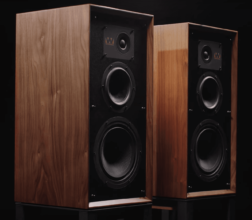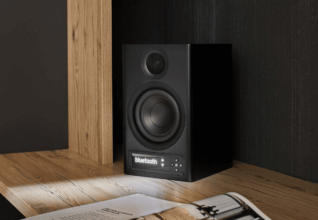Triangle Capella Active Speakers Review
With the elegantly designed Capella, Triangle aims to conquer the market of high-end streaming speakers. The test reveals what these speakers, their control hub, and its room correction can do. Tested at 2,500 euros/a pair.
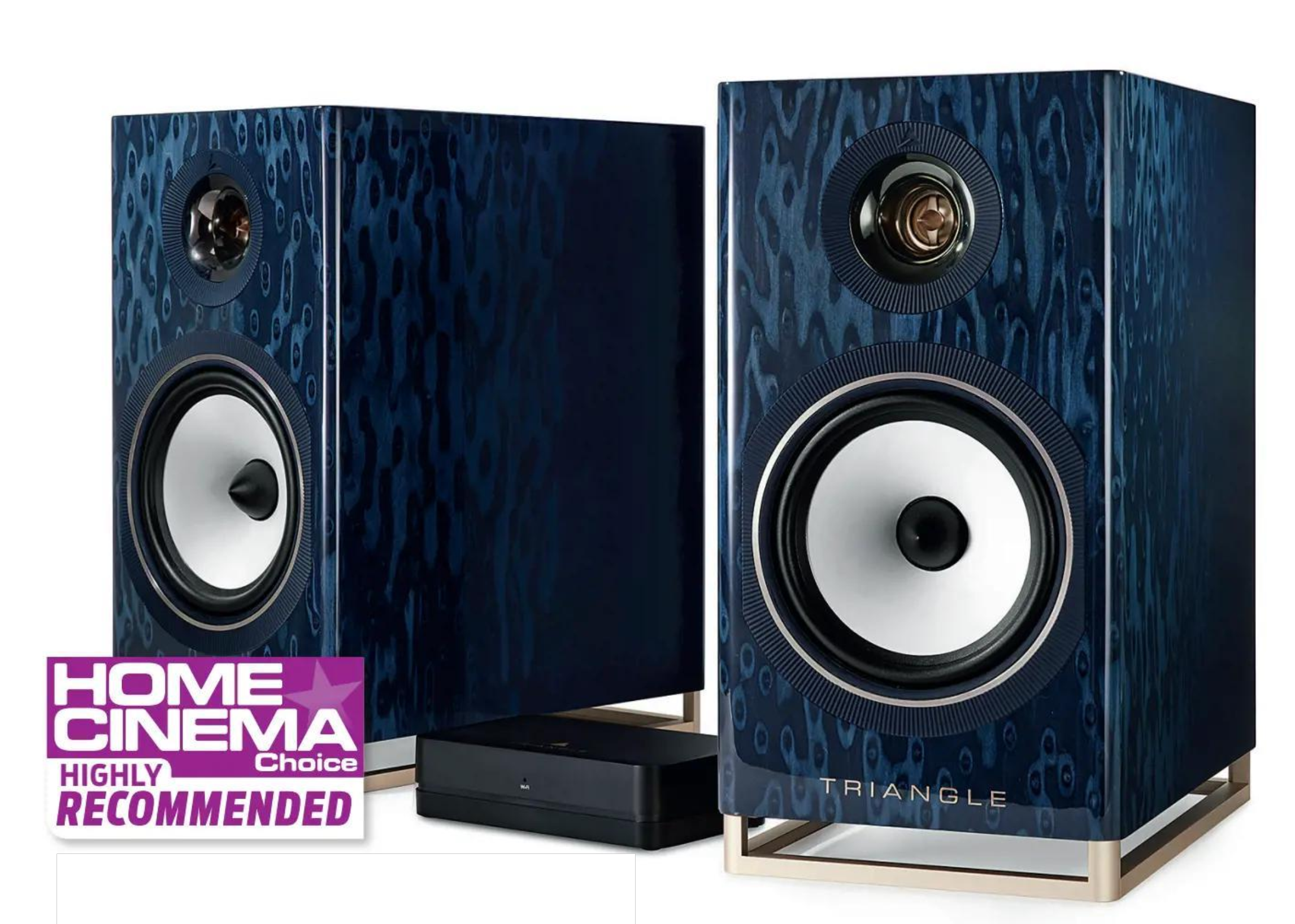
Triangle has proven time and again that they build excellent sounding speakers—ranging from high-end models like the ‘Magellan’ to the surprisingly powerful entry-level models in the ‘Borea’ series. The affordable ‘Borea’ series and the similar ‘LN’ series also included the brand’s recent ventures into active speakers. These models are attractive offers with good features and, for their price, solid build and sound quality.
Now, however, the manufacturer seeks to enter more exclusive price ranges and presents the Capella, a sophisticated pair of active speakers priced at around 2,500 euros, aiming to shake up the mid-range market. More than that: the speakers are accompanied by a matching ‘Control Hub’ that makes them network-capable, positioning the Capella as a new entry in Triangle’s lineup of streaming active speakers. The small black box, developed in collaboration with Denmark’s Platin Audio, houses all inputs, functions as a preamplifier, and sends music wirelessly to the speakers using the WiSA protocol.
AV INFO
Product: Stereo active wireless system with WiSA hub
Position: Active version of Triangle’s Esprit line of speakers
Peers: Sonus faber Duetto; KEF LS50 Wireless
Wireless with WiSA
WiSA (‘Wireless Speaker and Audio’) is developed by the WiSA Association and is a wireless standard known for its ability to transmit multi-channel audio wirelessly, with a WiSA transmitter capable of sending up to eight channels. However, it’s also suitable for stereo sound, transmitting music uncompressed at up to 24-bit/96 kHz—a protocol also used by brands like Piega, Bang & Olufsen, and Dynaudio for their wireless speakers.
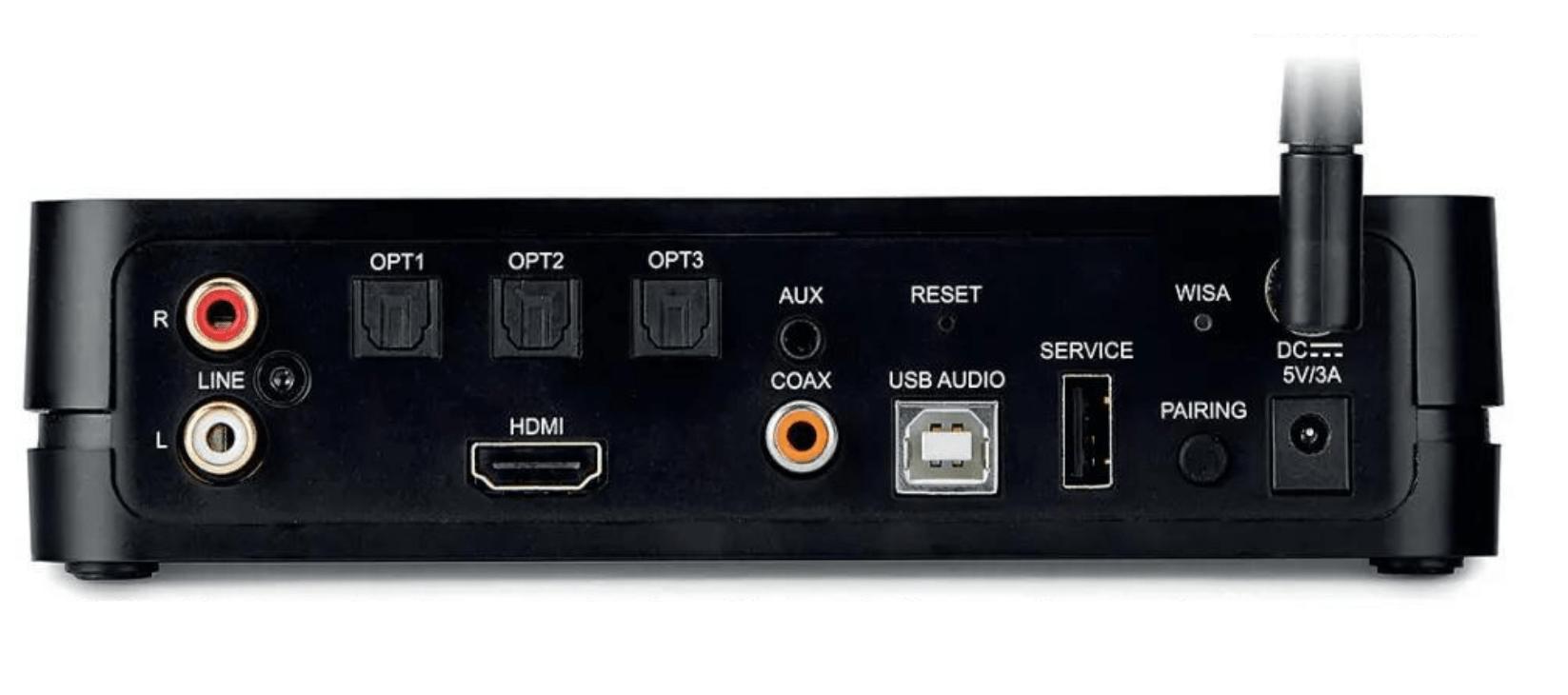
Most operations through the Hub
Since this standard isn’t exclusive to Triangle, a separate WiSA transmitter could also send a signal to the speakers, bypassing the Hub. Additionally, each speaker has an RCA input, allowing for wired operation. However, since the volume control is in the Hub, a preamplifier would need to be connected. In any case, the signal is first digitized as each speaker’s amplifier (50 watts per driver, 200 watts total) is preceded by an active DSP (digital signal processor) that also functions as a crossover. According to Triangle, this helps optimize the speakers’ frequency response.
Enough of the extra options—most customers will likely control the Triangle speakers via the Hub, which comes with a remote control. In addition to Wi-Fi streaming—more on that in a moment—the back of the box features numerous inputs to cover various usage scenarios. An obligatory RCA input for analog sources is a nice touch, and HDMI with ARC for a TV is almost standard today.

Additionally, there’s a coaxial digital input, three optical inputs, a 3.5mm mini-jack, and a USB-B port. Although USB sticks can’t be connected, a computer can send its signal to the Capella through the USB-B port. On the one hand, the speakers could thus function as desktop speakers; on the other hand, locally stored music can be transmitted directly to them. It’s also practical that the Hub, and therefore the sources, can be somewhat distant from the speakers—during the test, even in another room was fine, though not too far away.
Triangle recommends using the free Google Home app for setting up the speakers, which requires a Google account. In the app, the Hub—which is pre-paired with the speakers—connects to the Google account, other devices set up in Home, and, of course, the home Wi-Fi. What’s immediately noticeable: the Hub lacks a LAN port, making a wireless Wi-Fi connection mandatory.

While a Wi-Fi connection often suffices and can offer fewer interferences than LAN in some cases—though the wired option should at least provide higher stability—the lack of choice is disappointing and quite unique. Back to Google Home: once setup in the app works, it’s straightforward. Unfortunately, in this case, it took several attempts before Google was willing to connect the Triangle to Wi-Fi.
Since this isn’t the first time we’ve encountered such issues with the app, it’s likely not Triangle’s fault but rather Google’s. Fortunately, there’s an alternative: connect your phone to the Hub, enter its IP address in a browser, and input the Wi-Fi password there. This method is somewhat more complicated than using Google but proved to be less error-prone in the test.
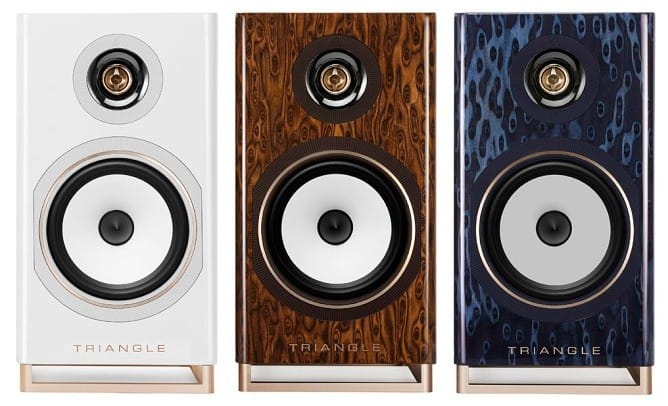
Once this hurdle is overcome, nothing stands in the way of enjoying music, and Chromecast is set up directly. Interestingly, Chromecast has recently been missing from quite a few new streaming devices we’ve tested, so it’s nice that Triangle supports it. Like Apple-exclusive Airplay, it allows streaming from almost all streaming services, but unlike Airplay or Bluetooth, without signal conversion and compression, thus supporting Hi-Res audio.
The manual also sees the Google protocol as the preferred method and explains, for each service individually, how to stream via Chromecast. This works with Amazon Music, Deezer, Qobuz, and Tidal—though Tidal’s Connect protocol isn’t supported. For Spotify, as is often the case, the proprietary Connect is the only way to stream music to the system.
UPnP support is also part of the package, allowing music from a phone or a server on the network to be sent to the set via apps like BubbleUPnP or MConnect. Finally, the Triangle speakers are, of course, Roon Ready, meaning they can be fully controlled by the music management and control software and integrated into multi-room systems. This is also possible via Airplay and Chromecast.
There’s also a dedicated app, although it’s rather basic, especially compared to some other apps. This is a shame, but it’s not intended as a companion app for music streaming but primarily as a control element for sound adjustments. Specifically, it’s used for room calibration (see the box), which is active in the range up to about 300 Hz. Besides this correction, the app has a surprisingly detailed equalizer that allows adjustment of higher frequencies as well. Furthermore, the volume of each speaker can be individually adjusted, and playback can be controlled, with buttons for play/pause and volume acting as a remote control replacement.
Special ideas for the remote and stands
These settings can also be made via the good remote control, which appears to have a motion sensor that activates the LEDs on its top when lifted. These LEDs indicate the currently active input and the current volume. This is a simple yet practical idea, especially since neither the speakers nor the Hub display this information, and there’s no direct control at the speakers. Other than that, the remote is rather simple—when streaming, there’s not much a remote control needs to do.
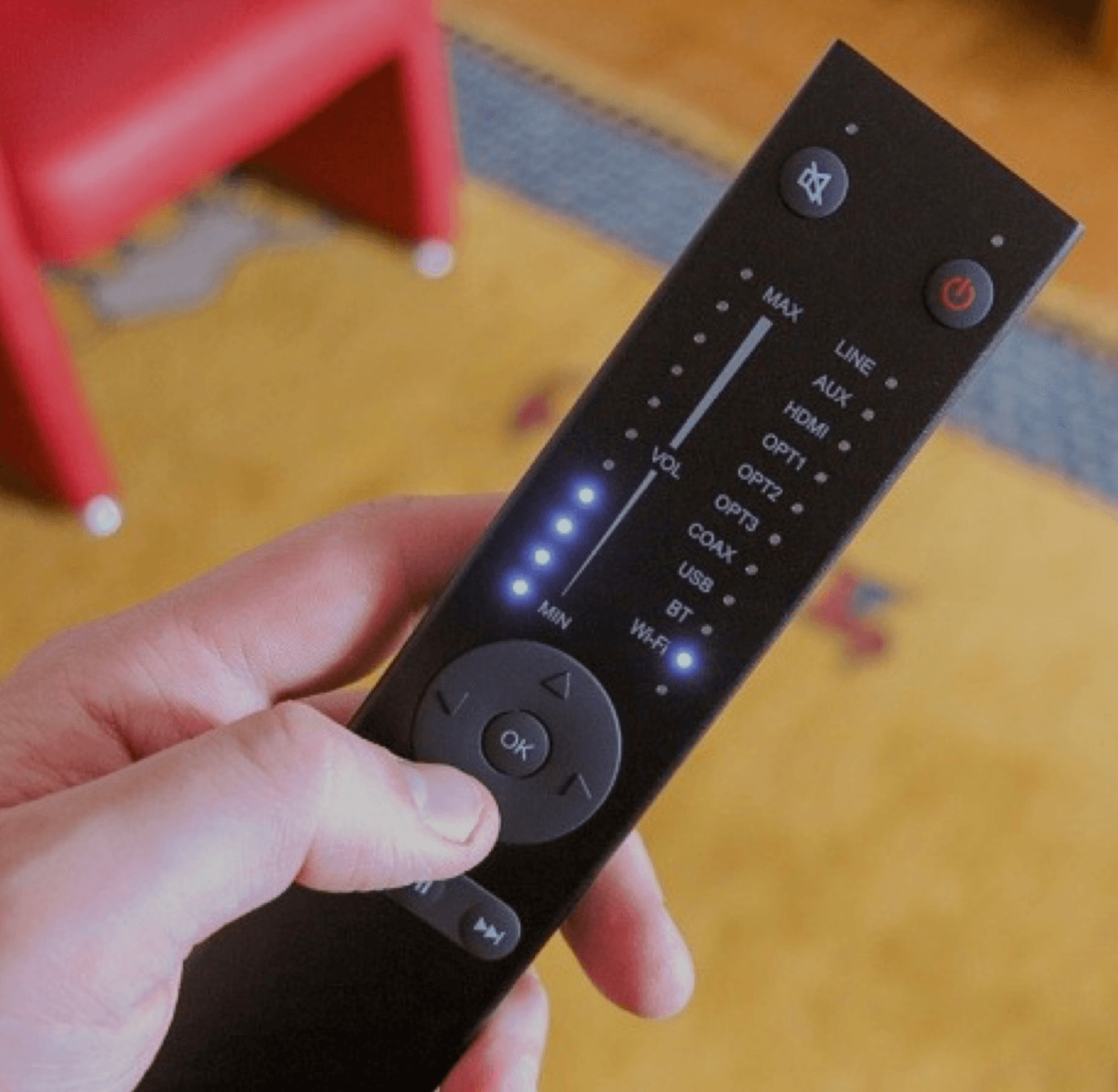
While the remote is always included, the ‘S05’ stands are optional for 280 euros—but they’re a highly recommended accessory. Since the downward-facing bass reflex port of the speakers needs space to breathe, Triangle has equipped the Capella with a firmly attached metal structure as a base. While stylish and providing decoupling from a sideboard, this base makes the speaker’s footprint too large for many standard speaker stands. However, the ‘S05’ stands fit them perfectly, thanks to small indentations on the Capella’s metal feet.

Other solutions could hinder the reflex port’s performance, which would be a real shame—Triangle has put a lot of work into this component, as well as the damped internal bracing and the rounded front designed to reduce interference, all of which enhance the speakers’ sound. The same goes for the speaker drivers themselves. Standing apart from product series, the Capella is a distinct model, but it clearly draws inspiration from other Triangle models. Both the horn tweeter with a phase plug, made from magnesium, and the mid/woofer made from cellulose are at least related to the highest-quality drivers in the French company’s flagships, benefiting from research conducted for the 40th-anniversary speakers.
Triangle promises dynamic bass, harmonious treble, and, above all, natural voices. Naturally, this was the first test for the Capella, starting with Iggy Pop paying tribute to Leonard Cohen with his cover of ‘You Want It Darker.’ The appropriately dark spoken word performance sounds vivid and natural, with a full body that quickly gives you goosebumps.
But the musical background is also well defined and separates from the speakers, with the bass wrapping around the vocals and other instruments in a relaxed yet never overpowering way. In the track ‘Vamp’ by Trentemøller, described by a colleague as a ‘test signal,’ the bass becomes more prominent—and the Triangle speakers demonstrate their playful nature, throwing the gritty impulses into the room and playing surprisingly deep for their size. Even here, the Capella maintains control with ease, sounding natural and relaxed, though perhaps lacking the last bit of clear definition when compared to more expensive candidates.
Triangle enters the field of streaming active speakers and proves its prowess in speaker design. There are minor deductions for the lack of control options directly on the speakers or Hub and the simple app—but the good room correction, excellent remote control, and diverse connectivity options make up for that, while Chromecast ensures versatile streaming. Not to mention the outstanding sound that unites dynamics, naturalness, and long-term appeal!
Specifications
Dimensions (W x H x D) in cm / Weight in kg:
20 x 38 x 31.5 (Speaker) / 7 x 4.5 x 10 (Hub) / 8.5 (Speaker) / 0.5 (Hub)
Design Principle:
2-way, bass reflex opening at the bottom
Communication Between Speakers:
Wireless (WiSA) / Control Hub
Recommended Placement Info:
On dedicated (or large) stands or sideboard, angled
SOUND (45%)
Rating: Good 1.8
Sound Quality: Deep and powerful for compact speakers, natural voices, and unintrusive, detached sound
MEASUREMENTS (10%)
Rating: Good 1.9
Frequency Response / Impulse Response: Good/Good
Distortion in Percentage at 63 / 3k / 10k Hz: Not measurable
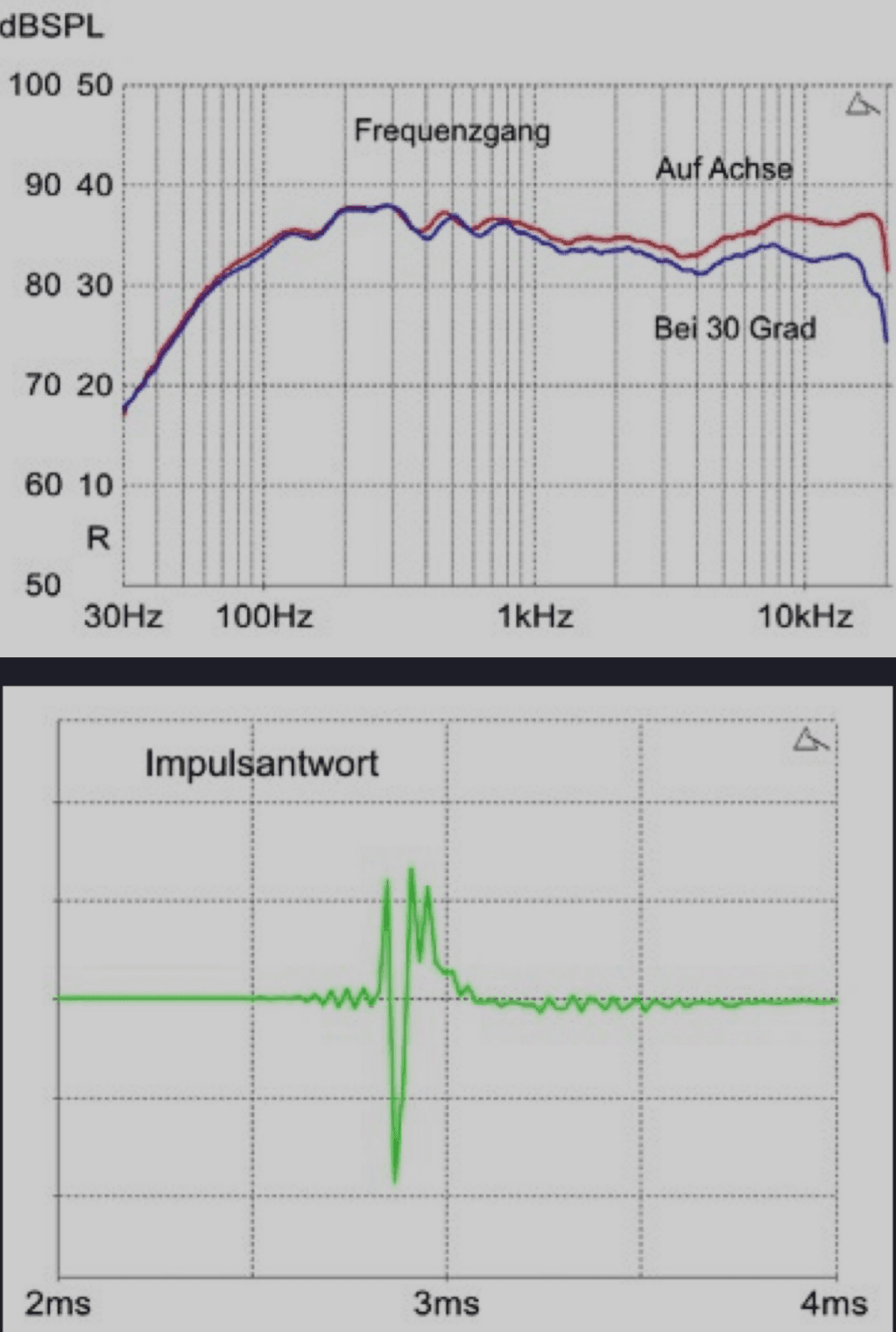
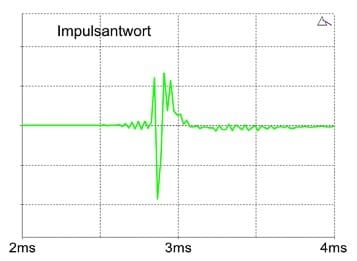
FEATURES (20%)
Rating: Satisfactory 2.7
Sound Correction Possible: Yes
Available Finishes: 4 (Astral Blue, Brown Mist, Black Star, Side White)
Included Accessories: Grille, fixed stands, power cable
Haptics/Build Quality: Good
Connections: Cinch (Speakers); Cinch, HDMI, AUX, USB-Audio, coaxial, 3x optical (Hub)
Bluetooth / USB Drive: Yes/No
Expandability: No
Streaming Standards: AirPlay, Chromecast, Roon Ready, UPnP / DLNA
Music Formats: Very many, including Hi-Res up to 24/192 (24/96 via WiSA)
HANDLING & OPERATION (20%)
Rating: Satisfactory 3.3
Setup / Initial Operation: Easy/Easy
Control on Device / Display: Not possible
Manual Quality / Remote Control: Still good (Quick Start Guide in German, full manual currently only in English/French) / Good
App Quality (Features / Usability): Adequate, only sound correction, no streaming
SERVICE & ENVIRONMENT (5%)
Rating: Satisfactory 3.1
Warranty in Years: 2 (3 with registration)
Packaging: Compact, mainly cardboard, some plastic
Power Consumption Stand-by / Idle (in Watts): 2.6 / 2.7 (Speakers) / 5.2 / 5.9 (Hub) (Network Stand-by)
STEREO TEST RESULT:
Good 2.3
Verdict

Hands-On Experience with Triangle Capella Active Speakers
Join Hi-Fi Editor Ed Selley from AVForums as he unveils the launch of the new Triangle Capella Active Speakers from France.
TRIANGLE CAPELLA Presentation - High End Active Speakers - Made in France
With its connected active speakers, the CAPELLA system offers unprecedented performance by combining the acoustic of ...





